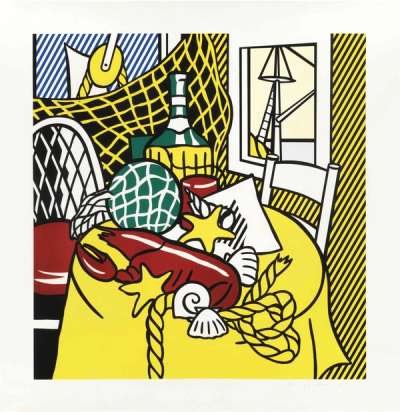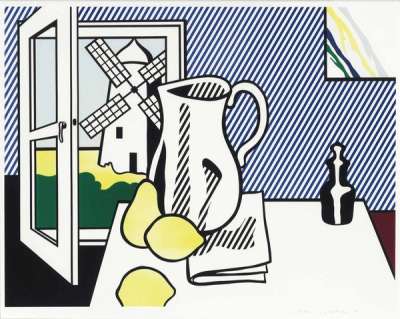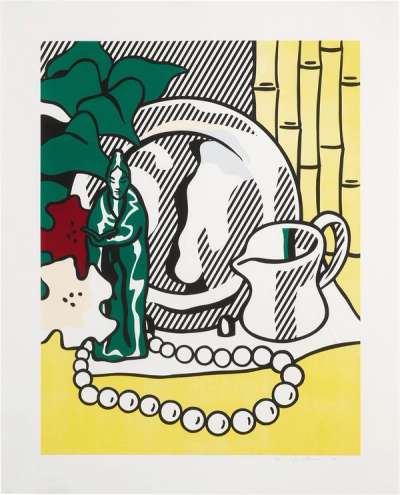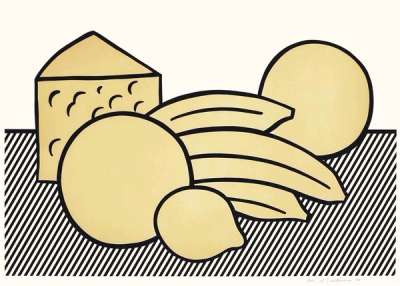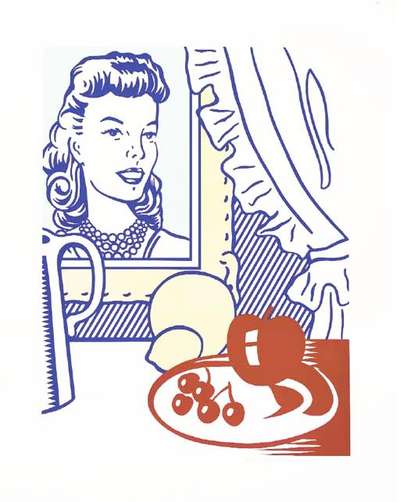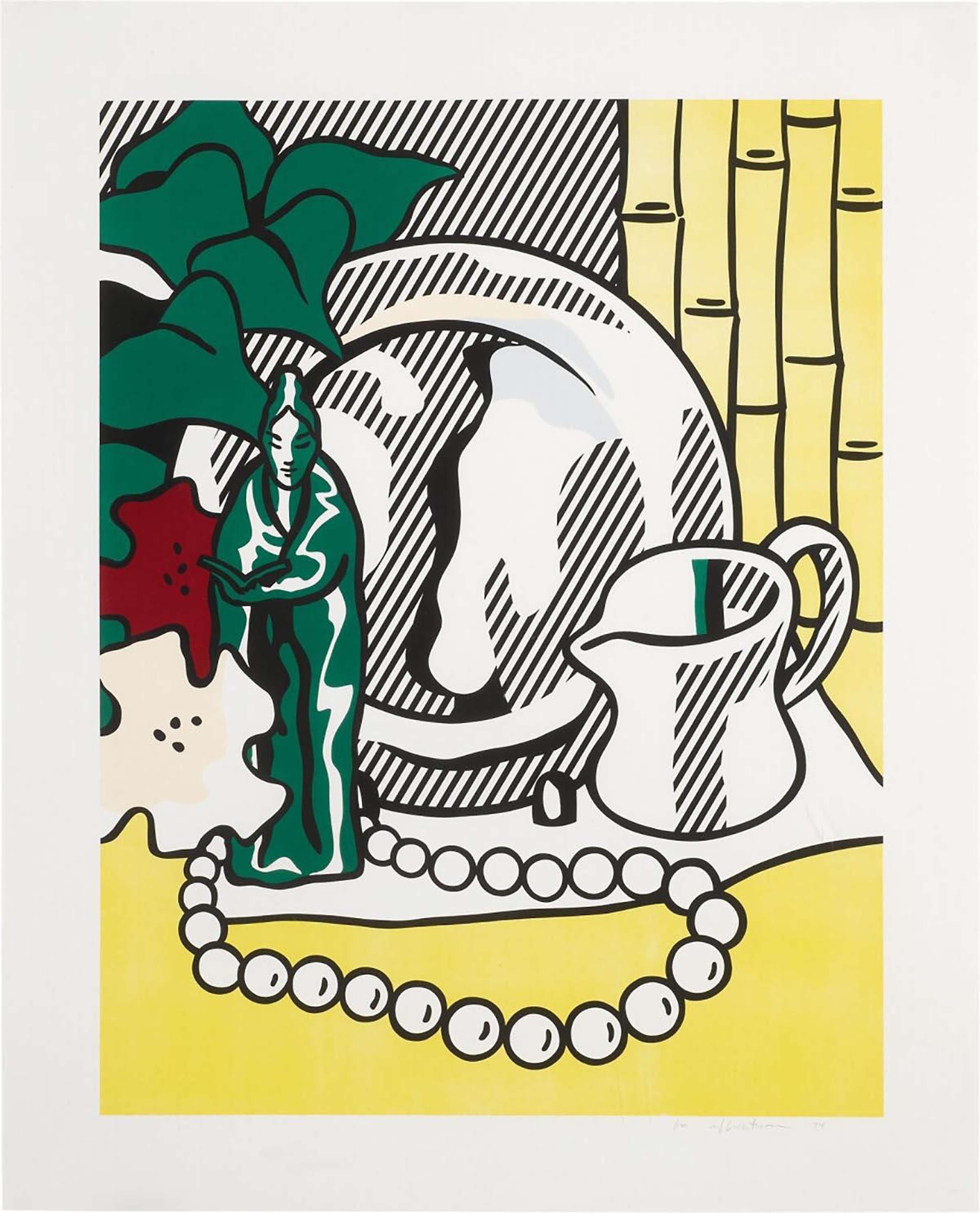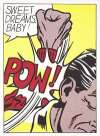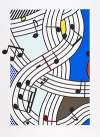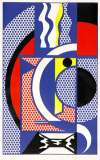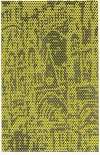Six
Still Lifes
In Six Still Lifes, Roy Lichtenstein takes a creative excursion into the well-established still life genre. Lichtenstein captures an assortment of historical and contemporary objects. In this mix of reality and artifice, Lichtenstein points out the traditional didacticism of the genre and offers a witty and confused view of contemporary values.
Roy Lichtenstein Six Still Lifes For sale
Six Still Lifes Value (5 Years)
With £124629 in the past 12 months, Roy Lichtenstein's Six Still Lifes series is one of the most actively traded in the market. Prices have varied significantly – from £1174 to £27630 – driven by fluctuations in factors like condition, provenance, and market timing. Over the past 12 months, the average selling price was £13847, with an average annual growth rate of 6.61% across the series.
Six Still Lifes Market value
Auction Results
| Artwork | Auction Date | Auction House | Return to Seller | Hammer Price | Buyer Paid |
|---|---|---|---|---|---|
 Still Life With Lobster Roy Lichtenstein Signed Print | 23 Oct 2025 | Sotheby's New York | £16,150 | £19,000 | £27,000 |
 Still Life With Pitcher And Flowers Roy Lichtenstein Signed Print | 21 Oct 2025 | Phillips New York | £9,350 | £11,000 | £15,000 |
 Still Life With Figurine Roy Lichtenstein Signed Print | 9 Jul 2025 | Dreweatts & Bloomsbury Auctions, Bloomsbury House | £11,050 | £13,000 | £17,000 |
 Yellow Still Life Roy Lichtenstein Signed Print | 14 Aug 2024 | Wright | £6,800 | £8,000 | £11,000 |
 Still Life With Portrait Roy Lichtenstein Signed Print | 28 Oct 2023 | Christie's New York | £11,900 | £14,000 | £19,000 |
 Still Life With Windmill Roy Lichtenstein Signed Print | 29 Jun 2022 | Blindarte Naples | £10,200 | £12,000 | £15,000 |
Sell Your Art
with Us
with Us
Join Our Network of Collectors. Buy, Sell and Track Demand
Meaning & Analysis
Six Still Lifes demonstrate a graphic, colourful excursion by Lichtenstein into the history and features of the historical still life genre itself. The artist rose to prominence owing to his distinctive and inventive cartoon aesthetic. He was infamous for utilising mass-produced images and printing strategies throughout his oeuvre.
Lichtenstein’s first creative exploration into the principles of still life painting commenced in the early 1970s. His Six Still Lifes of 1974 manifest a colourful excursion into the diverse history of the still life genre. The series offers the artist’s own vivid and modernised version of the venerated artistic tradition. The distinctly figurative Six Still Lifes later inspired Lichtenstein’s abstracted Seven Apple Woodcuts of 1983.
Historically, still lifes would provide the public with allegorical depictions of life versus death, changing cultural values, contrastive social classes and diverse belief systems. The means of still life painting have been exercised since ancient times, offering sublime scenes of prosperity and temporality. Despite its long-standing practice, its particular mode of representation has never ranked highest in the hierarchy of art. In fact, the genre was often dismissed for merely being a creative exercise in composition and texture.
Embracing the decorative qualities of still lifes, Lichtenstein renders his prints according to a pronounced commercial aesthetic. Each composition in this bright six-part sequence is predicated on the legacies of the great modern masters of the 20th century. As such, the Six Still Lifes join the conventions of old master portraits with fauvist colour palettes, abstracted layouts and the striking designs of Lichtenstein’s own fantasy. The series is essentially a collection of still life types.
Lichtenstein captures an assortment of historical and contemporary subject matter in these prints. He inserts objects from his own surroundings, as well artefacts he imagines assisted artists of the past in their creative endeavours. The sequence is composed of symbolic illustrations of social and cultural dynamics and traditional still life depictions posed as graphic adverts. Colourful seaside and landscape settings are coupled with Lichtenstein’s minimalist renditions of classical motifs. The Six Still Lifes swiftly incorporate these appropriated elements, stripped of original gravitas and obscured in their relation to each other.
